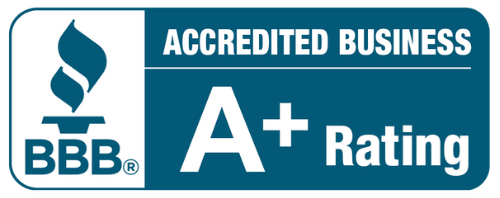Fall is officially here, and with that, it is time to get your home ready for the cold weather. A number of things are DIY projects that can help you protect your investment and make your utility bills lower.
1. Clean the gutters. Your gutters can be full of debris and can cause water backup against the house and damage to roofing, siding, and wood trim. A good way to help with keeping your gutters clean of debris is to put up gutter guards. Gutter guards are easy to install, and you can purchase these for as little as $1.28 per 3-ft portion at Home Depot.
2. Turn off exterior water faucets. When water is left in pipes, it can freeze, and this in turn can cause the pipes to burst as the water turns into ice. Depending on where you live, you can start disconnecting garden hoses and draining water from faucets as soon as the weather changes. If your home has been built in the last 10 to 15 years, you probably have frost-proof faucets and you can turn the shut-off valve off inside your home. There are also hard faucet covers that can be purchased at a price of $2.98 to protect from the freezing temperatures.
3. Mulch leaves when mowing. Instead of raking your leaves and running the risk of them sitting at the side of the road for an extended period of time, mow them. If you cut your leaves in place, they can decompose and give your yard much-needed nutrients during the winter. You can use a mulching blade instead of a regular blade to make more progress.
4. Divert water. You want to make sure that you add extensions to your downspouts so that water runs at least 3 to 4 feet away from the foundation. You can find these at your home improvement stores. This is an example of a downspout that is flexible and can expand from 25 to 55 inches.
5. Service your heating system. For a fee of about $80 to $100, you can get a technician to come out and inspect your furnace or heat pump to make sure it is in good working condition for the winter and that it is clean. This can actually be done before the fall/winter rush that will cause you to be in a long line of repairs. When looking for these contractors, you want to make sure that they employ certified technicians by the NATE (North American Technician Excellence) program.
6. Reverse your ceiling fans. Some ceiling fans have an option of a reverse switch; using this option will give you the ability to run your fan’s blades in a clockwise direction after you turn on the heat. Hot air rises, and Energy Star states that the fan will produce an updraft and push heated air down into the room from the ceiling. This can be very helpful when high ceilings are involved due to it allowing you to adjust your thermostat a degree or two lower.
7. Inspect your roof. You want to make sure you inspect and scan your roof closely. You will be looking for missing, damaged or loose shingles that may allow leaking from melting snow and during winter storms. If there is small repair needed, you can hire a handyman to do the work, but for larger jobs, call in a roofer. You also want to make sure you check flashing seals around vent stacks and chimneys for repair breaks.
8. Perform chimney sweeping. Before getting too excited about using your fireplace, make sure all fireplace and chimney vents are cleaned and in good working condition. By making sure that these things are done, you can prevent chimney fires and carbon monoxide from getting into your home. You can search here to find a certified technician in your area to come out and perform the service.
9. Drain the lawn irrigation system. This is something that you want to call in a professional to do. Having your sprinkler spigots and pipes drained will help prevent freezing and leaks. The cost of services for this will range from $75 to $150.
10. Test your sump pump. This is something that should be done every few months, before a rainy season and more so than not after a fairly long dry period. This can be done by slowly pouring a few gallons of water into the sump pit to allow you to see if the pump will turn on. The average life of a sump pump is noted to be about ten years. If more instruction is needed for testing and maintenance, you can refer to your owner’s manual.













I am so happy that I found this article. This was the topic that I need to learn.
Hi, we are glad that you enjoyed it. If you have any suggestions for future blogs, please do not hesitate to forward those to us and we will do our best to provide relative, informational material.
Everything that I need is already here. Very informative post
Hi John,
Thanks for visiting our site! We’re glad that the tips helped you get your home ready for winter. Check back in a couple of weeks for a new blog on getting your home ready for Spring!
– Team KC’s
Such a great and informative post. This can be a big help for me with my future project
I am commenting to let you know what a terrific experience my daughter enjoyed reading through your web page. She noticed a wide variety of pieces, with the inclusion of what it is like to have an awesome helping style to have the rest without hassle grasp some grueling matters.
Thanks for one marvelous posting! I enjoyed reading it; you are a great author.I will make sure to bookmark your blog and may come back someday. I want to encourage that you continue your great posts, have a nice weekend!
I’ve learned that I can rely on your posts for, relevant, USEFUL information with practical applications. Very cool. Thank you.
Great information. You always bring us up to date information, stated in easy to understand terms and It is not overwhelming. I appreciate that and I look forward to what is next.
Thanks. These are a great guide. Most of the homeowners ( including myself) aren’t aware of this. This is a valuable piece of information.
Thank you for the great article . I will follow the same as you told in this post.
I have learnt your blog. It is very informational. It gives brief knowledge about this topic.